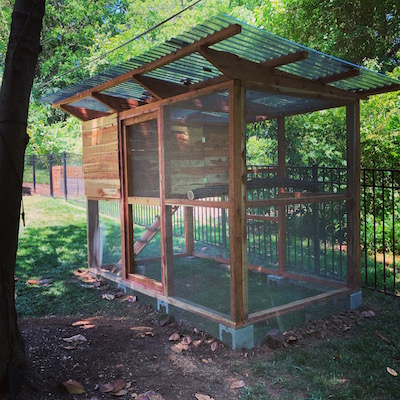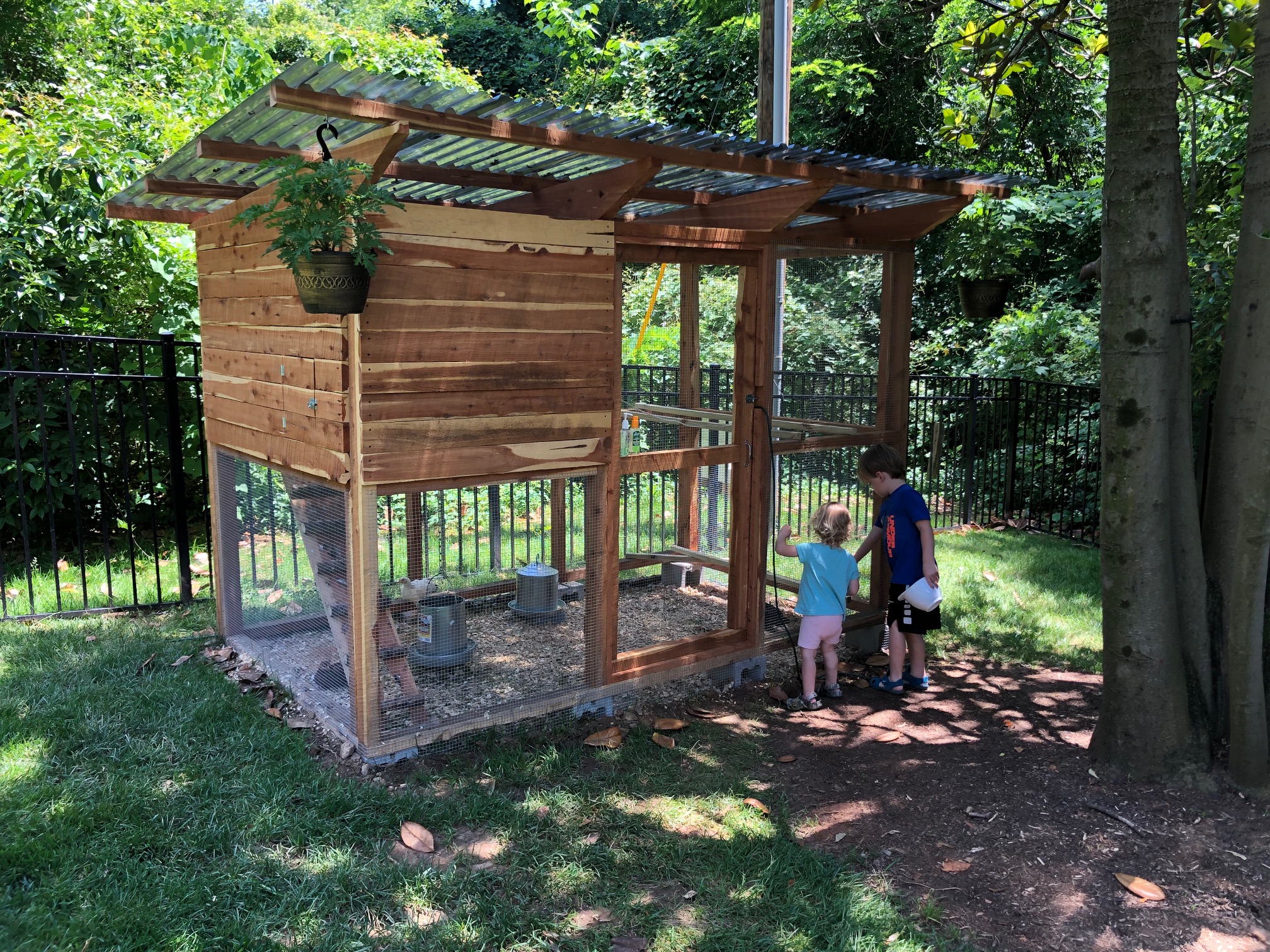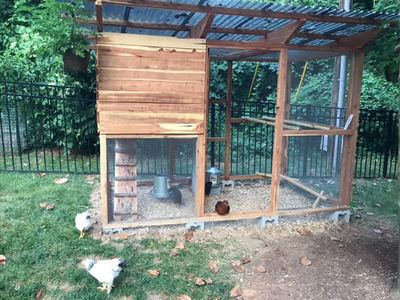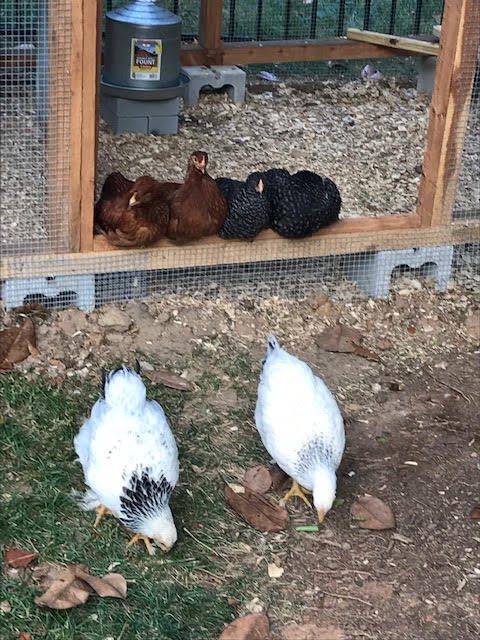Not a Moment Too Soon ; The Weber Family's Garden Coop
 Wednesday, June 12, 2019 at 2:02PM
Wednesday, June 12, 2019 at 2:02PM 
The Weber family’s new home nestles into a quiet corner of the Myers park neighborhood like a chocolate egg in an Easter basket. Neighbors catch up on the sidewalk while kids ride past on two wheels. The strip of woods just beyond their backyard screens what would be a clear view of spandex clad joggers circling the lake and hopeful anglers casting their lines at Freedom Park. And if they could only see past the wall of elm and ash trees, they would glimpse the Weber family’s new Garden Coop.

Dan Weber is a long way from the farm he grew up on in Southern Illinois, but he and Jen still feel strongly about teaching their kids the value of growing their own produce, appreciating the seasons, and loving the outdoors. They had already been growing fresh produce from a large organic garden in the backyard, so why not have free-range eggs too? And once the idea of having backyard chickens came up, it wasn’t long before a large cardboard box with a heat lamp and lots of peeping appeared in the family’s basement.
Weber Family's Garden Coop from Microfarm Organic Gardens on Vimeo.
Soon the peeping got louder, and the box started to smell. Really smell. Elmo, Bama, JJ, Ruth, Hermione, and CJ Marshmallow needed a permanent home. Something attractive, sturdy, and outside.
The Garden Coop was the answer.

The clean, attractive design fit right into the neighborhood, and the coop has plenty of room for the growing flock to stretch out their wings. In fact, the Garden Coop is large enough for up to eight hens, which means extra space for a smaller flock. The more square feet of coop space you allow per bird, the less likely you’ll have to deal with bullying and other aggressive ‘peck order’ type behavior.
And because the coop essentially sits on the edge of a forest teeming with natural predators like raccoons, possums, hawks, owls, and coyotes, it has to prove itself nightly as pairs of eyes appear in the shadows. But that’s no problem. The Garden Coop is one of the sturdiest designs out there. The burly cedar frame is joined with 3” exterior screws, and wrapped with 1/2” galvanized hardware cloth - buried up to a foot deep, around the entire perimeter of the coop to thwart even the most determined predators.

One of the best things about the Garden Coop is covered run built right into the design. The durable, tinted polycarbonate roof panels help keep the hens dry and cozy in wet, winter weather, and cool and comfortable on hot summer days.
The human sized entry door and large hinged clean-out door on the roost box make it easy to refill food and water, and clean the coop. A double nesting box helps prevent squabbles, and little touches like the ladder with natural branch rungs and 4” diameter rustic roost branch make the coop more comfortable.

So how is the Weber family’s backyard flock settling into their new home? “They really seem to enjoy their coop and feel safe in it”, says Jen. “They put themselves to bed every night after getting a few hours to roam around the yard. The hens all have unique personalities and it’s been fun watching them develop over the past couple months. Ruth is definitely the “mother”, Bama is the most assertive and JJ is the friendliest and likes to be held.”








